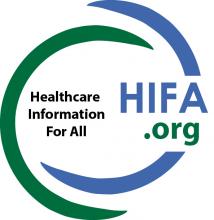
Many of us have been highly impressed by the work of organisations such as Medical Aid Films, Global Health Media Project, SAWBO and others involved in the production of video health content. With this in mind, the Mobile HIFA Working Group (which is dedicated to issues of mobile phone-based healthcare information for citizens, parents and children) carried out a survey of video content producers. The survey was implemented by Laura Wright (Masters in Library and Information Science student) and lecturer Dr Chris Hagar, both of the San Jose State University (USA). (HIFA now has a substantial track record of working with academia in this way - please contact us for details.)
In July 2016 we brought together several producers of health video content to discuss the results of the survey and ways forward. Laura Wright opened the meeting with a presentation of the results (see Uploads below)..
The notes of the meeting are available below (see Uploads). We have selected seven key points and seven unanswered questions for further discussion:
1. 'Translation is a challenge'
2. 'There are lots of gaps in coverage. There appears to be little if any content available on: NCDs; HIV/AIDS; STDs; Family Planning; Mental health; Adolescent health.'
3. 'There is no coherent library that maps out what areas have been covered and what are the gaps'
4. 'Preloading of content onto phones before sale has been proposed. However, it is unknown whether preloading would lead to an increase in the use of content.'
5. 'Updates are expensive and time-consuming... It is less expensive to update animations.'
6. 'Evaluation of diffusion/dissemination is challenging: How to track people using and to trace dissemination? How many people are reached by a single download?'
7. 'The ideal is to measure impact in terms of health outcomes/lives saved. In practice this is very difficult. It is often not even possible to measure the proximal indicators of knowledge improvement and changes in practice/behavior.'
UNANSWERED QUESTIONS
1. What more can HIFA do to raise awareness of the challenges of content producers?
2. What more can HIFA do to advocate to funders and mobile handset manufacturers to invest in health video content for producers?
3. Do we have any quantitative data on downloads/distribution?
4. Do the respondents have any formal or informal evaluation materials that they could share?
5. What are the main gaps in terms of language?
6. It was noted that choice of subject area is often driven by donor, rather than by need. What can be done to ensure that topics meet actual needs rather than donor priorities?
7. What is the evidence for and against preloading all mobile phones with essential health information? Would people use it if it came preloaded? If saturation can be achieved through self-uploading, then preloading might be unnecessary. But what is the likelihood of achieving saturation through self-downloads (one suspects this is very remote): for example, what percentage of individual countries populations has actually proactively downloaded the Red Cross First Aid? Or, put another way, if one were to look at 100 random mobile phones in (say) Nairobi, how many of them would include the First Aid app? (one suspects less than 1%)
We welcome comments and suggestions for ways forward. We would also be very interested to hear about other producers of video and animated health content for citizens, parents and children.
We invite everyone to join the HIFA Forum to discuss further.

